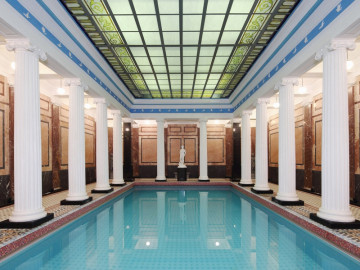Vysoko-Petrovsky Monastery - a monastery with a history of seven centuries
Vysoko-Petrovsky Monastery on the bank of the Neglinnaya River was first mentioned in 1377. According to different versions, the founders of the monastery could be both Ivan Kalita and Dmitry Donskoy. The monastery was rebuilt several times at the expense of tsarist donations from Vasili III, Alexei Mikhailovich and Peter I. In Soviet times the monastery was closed.
The architectural complex of the Vysoko-Petrovsky Monastery consists of seven churches and occupies almost the whole quarter on Petrovka. However, few people know about the existence of this atmospheric place, and so the monastery gained the name "invisible" among the people. Since 1923 one of the largest underground monastic communities in the USSR was in the Vysoko-Petrovsky Monastery. The Vysoko-Petrovsky Monastery resumed service only in 2009. Today one can see Cathedral of St.Peter, Metropolitan of Moscow of the 16th century, as well as several chapels, churches and temples of the 16th-18th centuries. Among the monastic relics is an ark with a piece of the Cross of the Lord and the icon of Peter the Wonderworker with a part of the relics of the saint. This quiet monastery in the center of Moscow attracts not only pilgrims but also those who are completely far from religion.






































